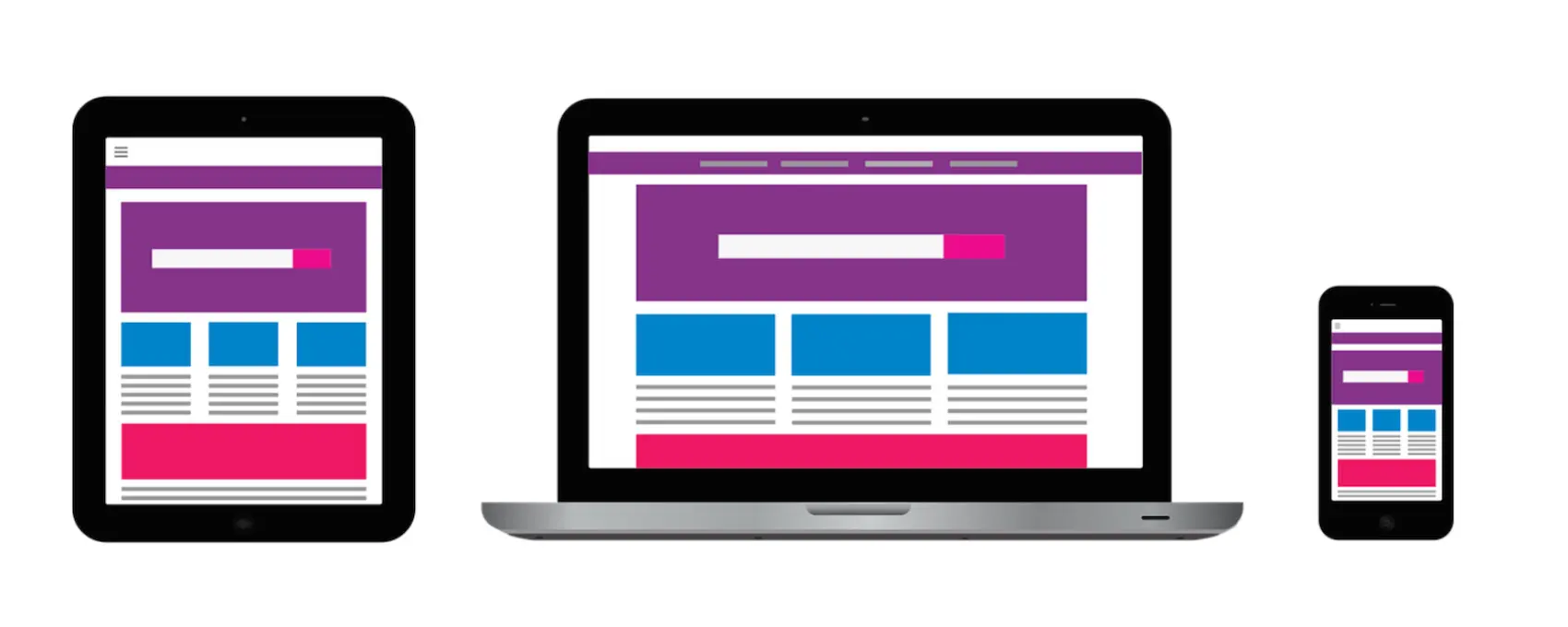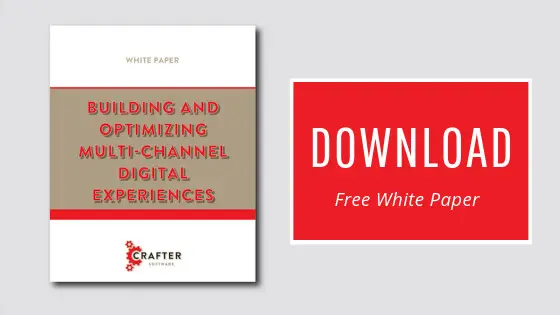Content and Commerce: Why Online Retailers Need To Go Headless

Amanda Jones

The capabilities of online retailers have evolved by leaps and bounds in the digital age. In the past, customers were limited to using desktops or laptops to make their online purchases. Today, consumers make purchases through the internet from smartphones, tablets, in-store kiosks, gaming platforms, OTT video screens, social networks and more. Customers can exercise their purchasing power from anywhere, at any time. Omnichannel has driven online retailers to look for new and innovative ways to deliver product information and content to consumers, and to drive immediate purchase decisions. That’s where headless content and commerce comes in.
What is Headless Commerce?
A headless content management system (CMS) is a system in which the front-end presentation layer (the “head”) is separate from the content authoring and repository. A headless commerce solution works in much the same way: shopping site creators can lay out the products, categories, and other shopping experience using any front-end they want, while the product data, pricing and discounts, order processing system, and other vital back-end functions are entirely separate.
How Does Headless Commerce Work?
Instead of relying on a tightly-coupled system to facilitate communications between the presentation and data layers, a headless commerce system uses API calls to send requests from the customer facing applications to the back-end systems. The order processing system handles the order, then sends another API call to the presentation layer to inform the customer about the status of their order. The front-end developers can tailor which information the customer receives, such as shipping tracking numbers, shipping dates, or links to items related to their purchase.
Headless Commerce vs. Traditional e-Commerce
The traditional e-commerce architecture has offered thousands of businesses an integrated system by which they can launch their online stores. While these systems have their uses, they also lack some of the flexibility found in headless commerce platforms. Just as businesses have learned to take advantage of headless CMS software, e-commerce developers have seen many of the same benefits when using headless commerce solutions such as front-end technology flexibility, authoring capabilities, and adaptability.
Front End Development
A major difference between traditional and headless e-commerce development comes from how each system handles the front end. In a traditional e-commerce system, the front-end was limited to websites and basic mobile support as dictated by the e-commerce platform. As a headless e-commerce system relies on API calls to communicate with the back-end, developers working with a headless platform can craft their customer experiences to match their business goals using any front-end framework their want.
Content Authoring
Traditional e-commerce platforms also limit how marketers can author product details and other content. These systems use built-in templates in an attempt at a “one size fits all” approach for websites, which seldom fits the modern omnichannel needs of online retailers. Headless commerce systems allow businesses to customize their processes for their content managers as much as for their customers, which creates a more efficient user experience for content creators.
Adaptability
The closely-coupled nature of traditional e-commerce systems leaves little to no flexibility for developers to adapt to changes in their businesses. Clients using these systems may need to wait for software upgrades, change platforms, or work within the limits of their current platform. With a headless commerce system, developers have the flexibility to meet the needs of their business as circumstances change, whether those circumstances involve changing digital channels, changing products, or changing customer demands.
Combining Content and Commerce for “Experience-Led Commerce”
The traditional approach to e-commerce has been to focus on receiving and processing orders through a website while providing minimal engagement with the customer. The traditional e-commerce platform architecture facilitated this approach and couldn’t offer highly dynamic, personalized content and commerce capabilities to a multitude of devices.
Headless commerce combined with headless content management opens up a whole new way to improve the overall customer experience. This “experience-led commerce” approach involves creating a welcoming and informative content experience for the customer, rather than solely focusing on the transaction itself. Some of the key benefits to a experience-led commerce approach include omni-channel shopping experiences, faster time to market, personalization, and higher conversions.
Omni-Channel Shopping Experiences
An experience-led commerce approach allows retailers to engage with customers through multiple mediums. Customers can shop through their regular devices, such as desktops, laptops, smartphones, and tablets, as well as other devices, from Internet of Things (IoT) devices and appliances to voice-activated digital assistants, such as Amazon’s Alexa, all with a seamless and consistent experience.
Faster Time to Market
The API-driven architecture of headless commerce also lets retailers reach their target audiences faster and easier than traditional e-commerce platforms that were tightly coupled. Content and product descriptions can easily be reused across channels to reduce workloads. This approach lets retailers quickly adapt to new markets, new products, and new channels with less effort.
Personalized Shopping Experiences
The experience-led solution also lets retailers provide personalized shopping experiences to customers through dynamic content delivery. The headless commerce system can extend that experience beyond “if you bought A, you’ll like B”, but also into promoting relevant blog articles, social media posts, and other content that relates to the customer’s purchasing habits. Also, the multi-channel capabilities of the headless system keeps the customer engaged throughout the process, which can encourage them to come back in the future.
Improved Conversions
The objective of any e-commerce system is to convert visitors into buyers. In numerous instances, traditional systems fall short of delivering on this objective, as potential customers drop their online shopping carts due to frustrations with the website or don’t feel engaged during the buying process. The experience-led approach focuses on improving the customer’s interaction with the site, regardless of the channel. This enhanced digital experience can lead to higher conversion rates as customers are engaged and presented with relevant products and information that make them more likely to make a purchase.
Why Headless Content and Commerce?
Combining a headless CMS with a headless commerce system allows online retailers to engage customers and offer a personalized experience across a multitude of devices and digital channels. In fact, a recent survey of 46,000 online shoppers conducted by the Harvard Business Review found that customers who used more than one channel spent 10% more at the online store than those who used only a single channel. The benefits also extend to the brick-and-mortar stores, as respondents who used at least four channels spent 9% more than those who used a single channel. That’s why retailers are moving to an API-driven architecture that allows companies to support multiple front-ends while reusing content and product information. In addition, content can be delivered to distribution channels dynamically by taking advantage of data-driven analytics.
Crafting the Shopping Experience
Rather than the cookie-cutter approach of traditional e-commerce systems, the headless commerce approach can help retailers craft a shopping experience tailored for their customers. Moreover, combining a headless CMS with headless commerce can help retailers optimize online sales with content marketing and omni-channel customer experiences, and while also reinforcing their brand identity across all channels. Using a headless, decoupled CMS like CrafterCMS lets you deliver personalized content at-scale to any digital channel through APIs.
And with CrafterCMS’s native integrations with headless commerce systems such as commercetools, online retailers have the ultimate solution for next generation e-commerce.
For more information on how CrafterCMS can help, download our new White Paper: Building and Optimizing Multi-Channel Digital Experiences.
Related Posts

Websites Are Dead?

Mike Vertal

No-Code Experience Building for Marketers & Designers

Amanda Lee

Is Your CMS MACH-Ready? A Practical Guide for Enterprise Architects

Sara Williams

Composable DXP vs Traditional DXP: Why Enterprises Choose CrafterCMS

Amanda Jones











